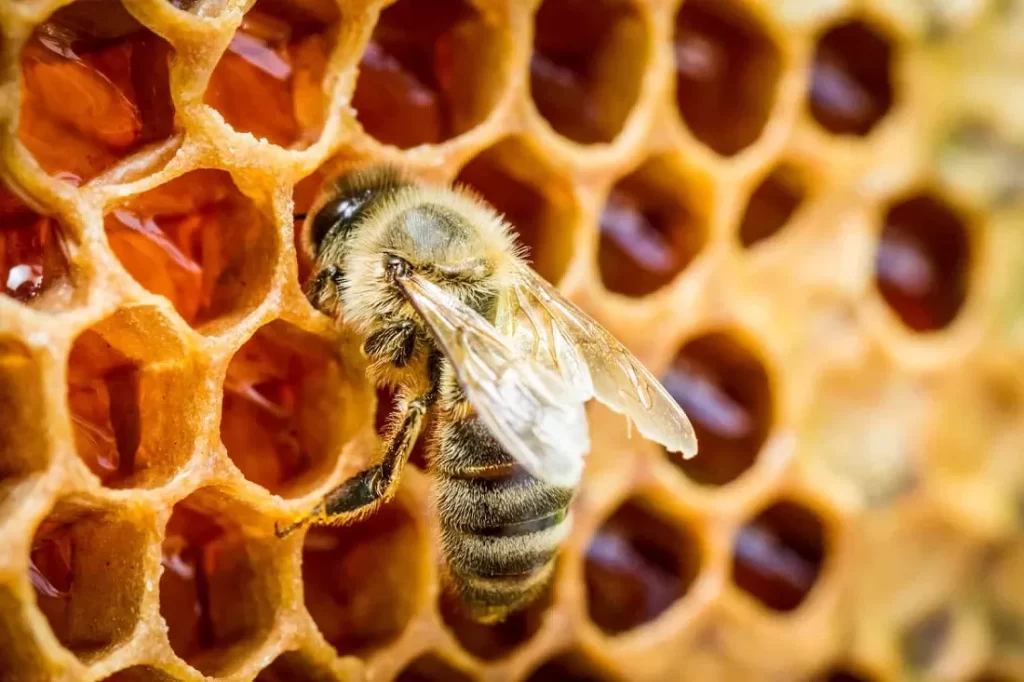In this blog post, we will delve into the captivating realm of bees and their remarkable honey-making abilities. Bees are fascinating creatures that play a crucial role in the ecosystem, and honey production is one of their most well-known and vital activities. We will explore the different types of bees that produce honey, the process of honey-making, and the significance of this process for the bees themselves.
Understanding the Honey Production Process in Bees
The Honey-Making Abilities of Different Bee Species
Bees come in various species, and each species has its unique role within the hive. Some bee species are exceptional honey producers, while others primarily focus on tasks like pollination, hive building, or caring for the young. Among the honey-making bees, the most prominent and famous species is the Honeybee (Apis Mellifera), which is extensively kept by beekeepers for honey production.

Honeybees have specialized body structures that enable them to collect and transport nectar efficiently. They have long, hairy tongues called proboscis that allow them to lap up nectar from flowers. Once they gather enough nectar, they store it in a special stomach called the crop, where enzymes start breaking down complex sugars into simpler ones.
The bees return to the hive, and through a process called trophallaxis, they regurgitate the partially digested nectar and pass it among worker bees. This regurgitation and sharing of nectar among bees help further break down the sugars and reduce the water content, transforming it into honey.
Honeybees then deposit the honey into cells in the comb, where it further dehydrates through fanning with their wings. The result is the delicious and nutritious liquid gold we know as honey. The process of honey-making is a collective effort within the hive, with thousands of worker bees working tirelessly to create this precious food source.
How Bees Create Honey: Nectar to Liquid Gold
The process of honey production begins with bees foraging for nectar from flowers. Honeybees are highly efficient foragers, visiting a vast number of flowers to collect nectar. They have developed complex communication through intricate dances that convey information about the location and quality of nectar sources. This communication helps the colony optimize their foraging efforts and ensures a steady supply of nectar for honey production.
When bees collect nectar, they store it in their crop, a specialized storage chamber located near their mouth. The crop can hold up to 70 mg of nectar, allowing the bee to carry a substantial amount of nectar back to the hive. Upon returning to the hive, the forager transfers the nectar to a receiver bee through trophallaxis, as mentioned earlier. The receiver bee then further processes the nectar and deposits it into the honeycomb cells for evaporation and conversion into honey.
The transformation of nectar into honey is a biochemical marvel that involves the enzymatic action of the bees’ salivary glands. Bees have special enzymes, such as invertase, that break down the complex sugars in the nectar into simpler sugars like glucose and fructose. The enzyme invertase specifically converts sucrose (a disaccharide) into glucose and fructose (monosaccharides), making the nectar more digestible and less prone to spoilage.
As bees pass the nectar from bee to bee through trophallaxis, these enzymes continue to act on the nectar, gradually reducing its water content. The bees also add some of their own saliva to the nectar, which contains additional enzymes that contribute to the transformation process. The precise balance of enzymes, temperature, and humidity within the hive aids in the efficient conversion of nectar into honey.
The bees’ dehydration process is critical for honey storage. Honeybees fan their wings over the cells of the honeycomb, creating airflow that promotes evaporation of excess water from the honey. The bees continue this process until the honey reaches the desired moisture content of about 17-18%. Once the honey is sufficiently dehydrated, the bees cap the cells with a final layer of beeswax to seal the honey in for long-term storage.
The Significance of Honey Production for Bees
For bees, honey serves as a crucial food source, especially during periods when nectar from flowers is scarce, such as winter or droughts. Honey provides bees with a concentrated energy source, essential nutrients, and helps maintain the temperature within the hive. Additionally, honey is also used to feed the developing brood and the queen bee.
Comparing Honey Production Among Different Bees
Variations in Honey Production Among Bee Species
While honey production is a common trait among honeybees, not all bee species are honey producers. Some bees, like the Bumblebee (Bombus spp.), store only small amounts of honey and rely more on nectar as their primary food source. Other species, such as Stingless Bees (Meliponini), produce honey but in relatively smaller quantities compared to honeybees.
Extracting Honey from Beehives: The Beekeeper’s Harvest
The process of harvesting honey from beehives requires precision and care. Beekeepers use various methods, from traditional manual extraction to modern mechanical techniques. The traditional method involves removing the beeswax caps from the honeycomb cells and using a centrifugal force to extract the honey. Modern beekeepers may use specialized equipment like honey extractors, which spin the frames to separate the honey from the comb.
The Incredible Relationship Between Bees and Honey Production
The Beehive’s Productivity and Honey Yield
The productivity of a beehive depends on several factors, including the size and health of the bee colony, the availability of nectar sources, and environmental conditions. A strong, well-nourished hive is more likely to produce a higher honey yield. Beekeepers can also enhance hive productivity through proper hive management and supplementary feeding when necessary.
Honeybee Foraging and Nectar Collection
Honeybees are skilled foragers that visit a vast number of flowers to collect nectar. They have developed complex communication through intricate dances that convey information about the location and quality of nectar sources. The efficiency of honeybee foraging and their ability to find and collect nectar are key factors in honey production.
Frequently Asked Questions (FAQ) – Do All Bees Make Honey? The Fascinating World of Honey Production in Bee Colonies
Q1: Do all bees produce honey?
A1: No, not all bees produce honey. While honeybees are the most well-known honey producers, other bee species, such as bumblebees and stingless bees, also produce honey but in relatively smaller quantities.
Q2: How do honeybees make honey?
A2: Honeybees make honey through a fascinating process. They forage for nectar from flowers, store it in a special stomach called the crop, and then regurgitate it back at the hive. Through trophallaxis, the bees pass the nectar among themselves, breaking down complex sugars into simpler ones through enzymatic action. The bees then deposit the partially digested nectar into honeycomb cells, where it dehydrates into honey through fanning with their wings.
Q3: Why is honey production significant for bees?
A3: Honey production is vital for bees, especially during periods of nectar scarcity. Honey serves as a concentrated energy source and essential nutrients, helping bees survive during winter or droughts. It is also used to feed the developing brood and the queen bee.
Q4: Are honeybees the most prolific honey producers?
A4: Yes, honeybees, particularly the species Apis Mellifera, are the most well-known and prolific honey producers. They have evolved to efficiently collect and process nectar, making them ideal for honey production in commercial beekeeping.
Q5: What role do honeybees play in pollination?
A5: Honeybees are vital pollinators. As they forage for nectar, they unintentionally transfer pollen from one flower to another, facilitating fertilization and the production of seeds and fruits. Their pollination services significantly benefit agricultural crops and contribute to global food production.
Q6: How do beekeepers extract honey from beehives?
A6: Beekeepers harvest honey from beehives using various methods. They may remove the beeswax caps from the honeycomb cells and extract honey manually using centrifugal force. Modern beekeepers may use specialized equipment, such as honey extractors, to spin the frames and separate honey from the comb.
Q7: What is the beekeeper’s role in honey production and conservation?
A7: Beekeepers play a significant role in honey production and bee conservation. They manage beehives, ensuring the bees’ well-being, health, and productivity. Beekeepers also take measures to prevent swarming, control pests and diseases, and provide supplementary feeding when necessary.
Q8: Why are honeybees declining, and what are the conservation efforts?
A8: Honeybee populations are declining due to various factors, including habitat loss, pesticide use, climate change, diseases, and parasites. Conservation efforts include creating pollinator-friendly habitats, reducing pesticide use, promoting sustainable agriculture, and raising awareness about the importance of pollinators.
Q9: How can individuals support honeybee conservation?
A9: Individuals can support honeybee conservation by planting pollinator-friendly gardens, avoiding the use of harmful pesticides, supporting local beekeepers, and advocating for pollinator-friendly policies in their communities.
Q10: What can we learn from the intricate world of bees and honey production?
A10: The world of bees and honey production offers valuable insights into the delicate balance of nature and the essential role of bees in maintaining biodiversity and supporting agriculture. Understanding honey production highlights the interdependence between bees and flowering plants and underscores the need for responsible beekeeping and bee conservation efforts to secure our food supply and the health of our planet.
Conclusion
In conclusion, honey production is a remarkable feat achieved by certain bee species, with honeybees being the most well-known and prolific producers. Their incredible ability to transform nectar into honey is a testament to the wonders of the natural world.
Understanding the variations in honey production among different bee species highlights the diverse roles bees play within their colonies and ecosystems. From the hardworking honeybee foragers to the nurturing nurse bees, each member has a crucial part to play.
For bees, honey is not just a sweet treat; it is a vital source of sustenance and nourishment, ensuring their survival and prosperity. The relationship between bees and honey production is a perfect example of the delicate balance of nature and the intricate interconnections that sustain life on our planet.
As we appreciate the fascinating world of bees and their honey-making abilities, let’s also recognize the importance of preserving their habitats and supporting bee conservation efforts. By protecting these tiny yet essential creatures, we safeguard not only their future but also our own.
Honey production is a remarkable natural process that benefits not only bees but also humans and the environment. Let’s delve deeper into the significance of honey production and the role it plays in sustaining ecosystems and supporting agricultural systems.

